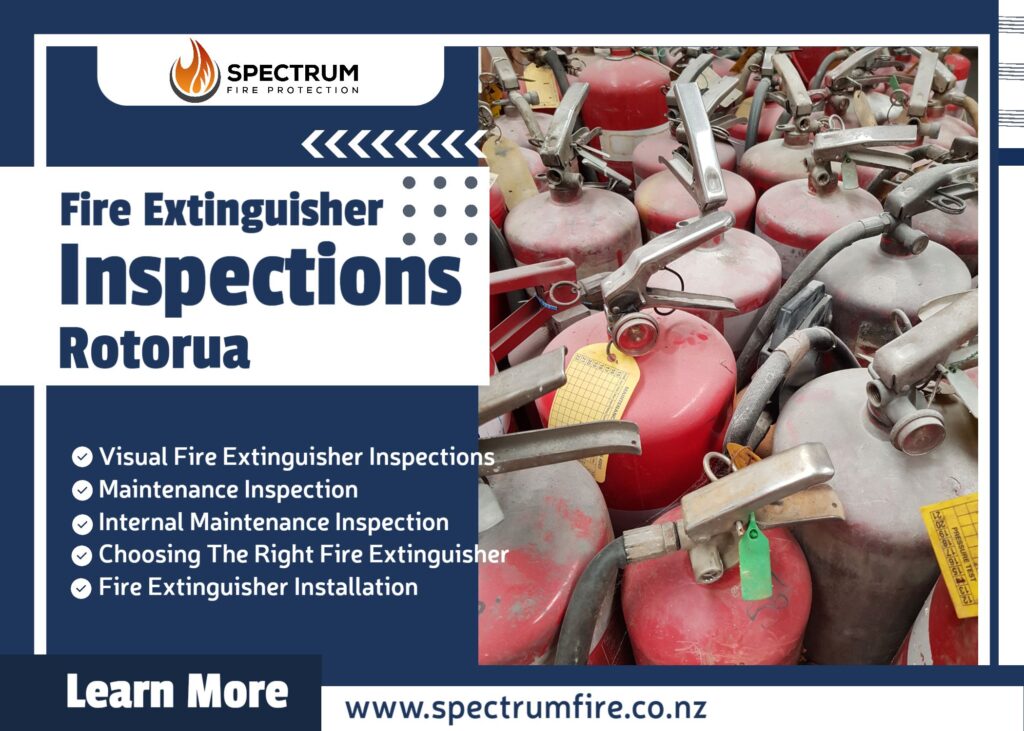Fires tend to occur at the most unexpected of times, and it’s in such situations that fire extinguishers play an undeniably vital role. What for the most part was just a red canister on your wall, suddenly becomes the difference between minor and extensive damage to your property. For your extinguisher to be up to the task when the need arises, maintenance is necessary.
Fire Extinguisher Inspections
Even though an in-house employee could follow a basic checklist and sign off on each extinguisher, an inspection completed by a skilled professional is required at least annually. The experience and expertise that comes with years of fire prevention work allow for a more thorough inspection process. When every part of the extinguisher is examined carefully, property owners can feel more confident in its ability to stop the fire in its tracks.
Visual Fire Extinguisher Inspections
According to guidelines, employers are required to perform visual fire inspections on their extinguishers once per month. This can be done by employees or building maintenance crews since it isn’t very demanding. Those conducting the inspection should check whether;
There is visible physical damage to the equipment.
The extinguisher is in its designated location.
Any obstructions are blocking the extinguisher from easy access and view.
The equipment is fully charged and operational. Ensuring the fire extinguisher is fully charged at all times is paramount to your safety, that of those around you, and your property’s.
Maintenance Inspection
NZS 4503 requires employers to conduct a full maintenance inspection on their workplace’s fire extinguishers once per year. It will entail a thorough examination and repair of all fire extinguishers in your facility. Due to its nature, it should be performed by an experienced professional fire protection company.
Professionals have the right tools and training and will do a better job. They will be able to recognise and correct potentially hazardous situations if any. All extinguishers that pass the maintenance inspection are tagged with a dated inspection tag. If an extinguisher fails the check, it is either repaired or replaced.
Internal Maintenance Inspection

Internal maintenance inspection should be carried out once every five years. It is a more thorough and demanding process and should also be conducted by professionals. First, the extinguisher will be discharged. Then a full internal examination will be done. The extinguisher will then be recharged to ensure all components are fully functional.
Hydrostatic testing is also carried out either independently or as part of internal maintenance inspection. It ensures the integrity and ability of the cylinders to contain the pressure used to expel the agent. Depending on the type of agent, hydrostatic testing is carried out.
Maintaining your fire extinguishers is paramount. In addition to fulfilling conditions by New Zealand standards, it ensures you and your property’s safety.
Nonetheless, apart from maintaining your fire extinguishers, there are other factors of equal importance that you should consider.
Choosing The Right Fire Extinguisher
Each flammable material is in a unique fire classification. Fire classifications include Class A, B, C, D, E and F. Each class has its own recommended fire extinguisher type. Therefore, it’s advisable to let a professional handle the installation of a fire extinguisher. Professionals recognise the category in which your environment falls in and the appropriate fire extinguisher for a fire emergency.
Fire Extinguisher Installation Methods
Choosing the right area to install a fire extinguisher is very important. It should be in a place where it is easily visible and accessible in case of a fire. For instance, it should be installed in an easily breakable glass cabinet or mounted on a metal bracket, where it can easily be removed when the need arises.


